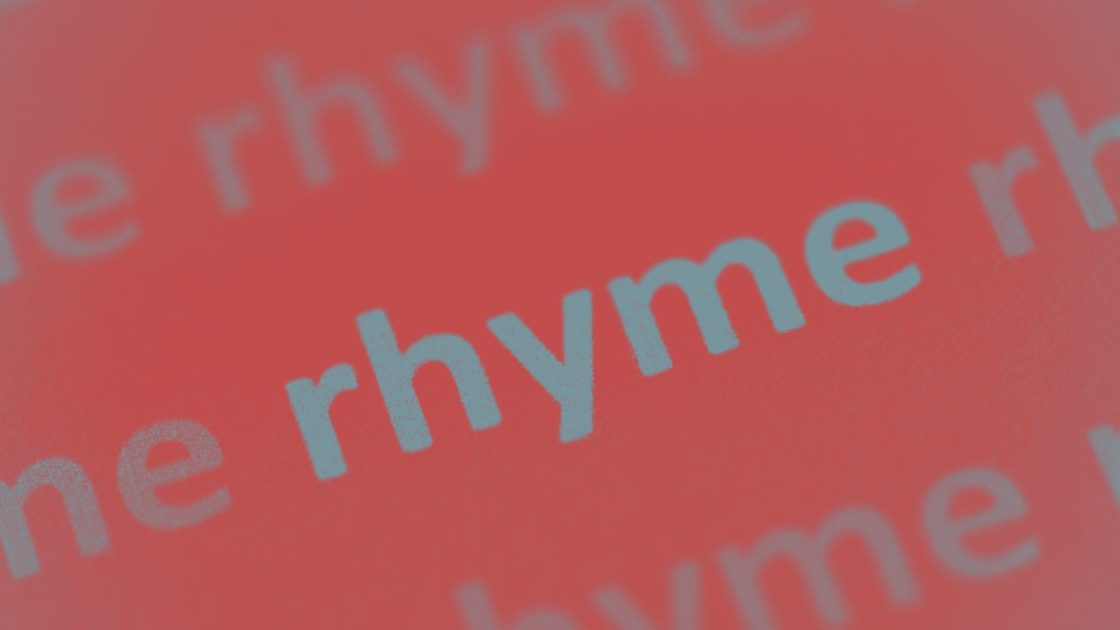There are so many different parts of a song, and plenty of aspects that go into writing one – but none are as important or as challenging as rhyming!
W’ 54 LOW FG GTX | Sale of leisure and fitness clothing and shoes online testosterone cypionate online usa fitness quartu sant’elena – lisola latina association…
Rhyming on the surface is making the ends of lines sound the same, but when you take a closer look at it, there is so much more to rhyming then two words that sound the same!
So what exactly is a rhyme? By definition a rhyme is two words ending with an identical or corresponding sound to another. There are different types of rhymes, and different ways to use rhymes. Let’s get into it!
Hard Rhymes VS Soft Rhymes
A soft rhyme is a rhyme where primary stress in one word rhymes with secondary stress of another word.
An example of a soft rhyme would be: Longneck, deck
“Just sitting here on my deck
Popping a top on this longneck”
A hard rhyme is a rhyme where the primary stress in both words rhyme.
Ex: Love, Dove
“She was my love
As pure as a dove”
One way to create contrast in song sections is to alternate where you use hard and soft rhymes. For example: You could use soft rhymes in the verse, and hard rhymes in the chorus.
Rhyme Schemes
What is a rhyme scheme??
A rhyme scheme by definition is “the ordered pattern of rhymes at the ends of the lines.”
If the end of your first and second line rhyme, and the ends of your third and fourth line rhyme; that would be your rhyme scheme, and it would be labeled AABB (A for your 1st and second lines matching, B for your 3rd and 4th)
Rhyme schemes are essentially the framework of your rhymes. You don’t need to have it planned out before you start writing – I would let this part come naturally to you during the writing process – BUT! Once you have developed your rhyme scheme you should stick with it the entire song. This allows your lyrics to have the same flow and rhythm throughout, and will make your lyrics easier to remember!
The most commonly used rhyme schemes are: AABB, ABAB, ABCB, AABCCB
Using Rhymes to Create Hooks/Moments
Once you have your initial rhyme scheme down you can start to use your rhymes to create memorable moments or hooks inside your writing.
A great way to do so is to use internal rhymes. Internal rhymes are words that rhyme within lines and can give that part of the song a lift or more punch.
For example:
“I look out the window and watch the wind blow
Staring into the night as the bright stars glow”
Rhyming Tips
Everyone gets stuck on rhyming once in a while. Don’t be afraid to use the internet as a helpful tool! There are tons of rhyme generators, just don’t rely on them too much!
This should go without saying – but matching consonants is not a rhyme…
All of your lines do not need to rhyme – if the flow is right and it sounds good – then it sounds good!
Don’t overthink things too much. Sometimes taking a break and revisiting the song a little later will work wonders for your creativity!
Try doing some cowrites, it’s amazing what you can learn from others and it will help you grow as a writer!
Do you have any rhyming tips? Leave them in the comments for other readers!




One Response
Have a good song title; then you can shape you’re song around it.
Example:
Song title: night and day
1st verse night and day you are the one
Night and day etc etc